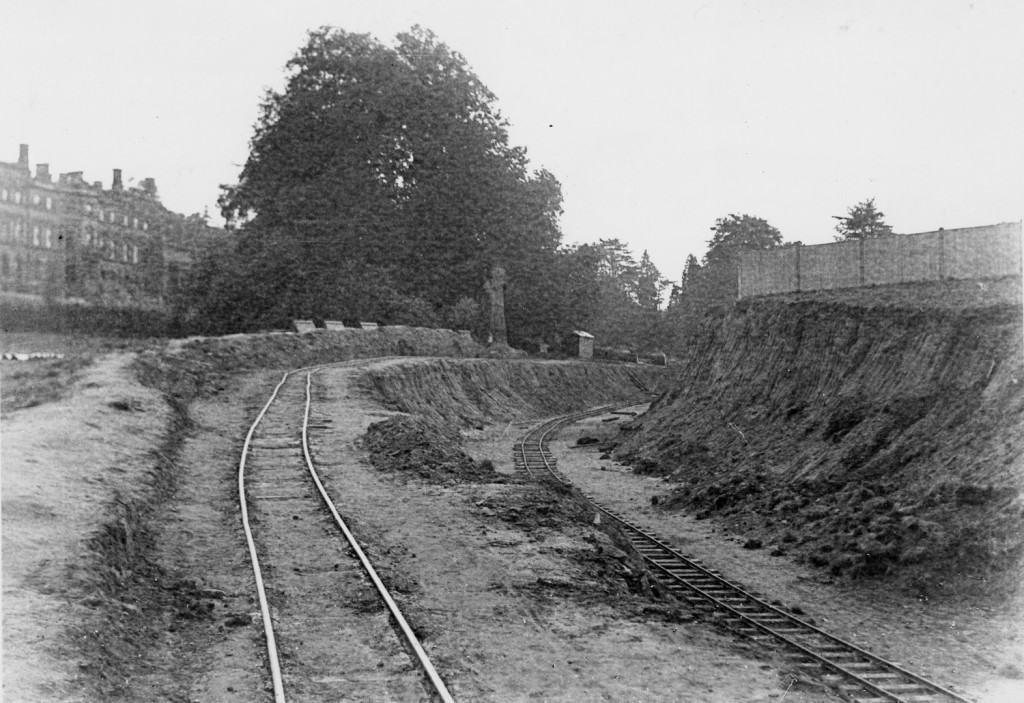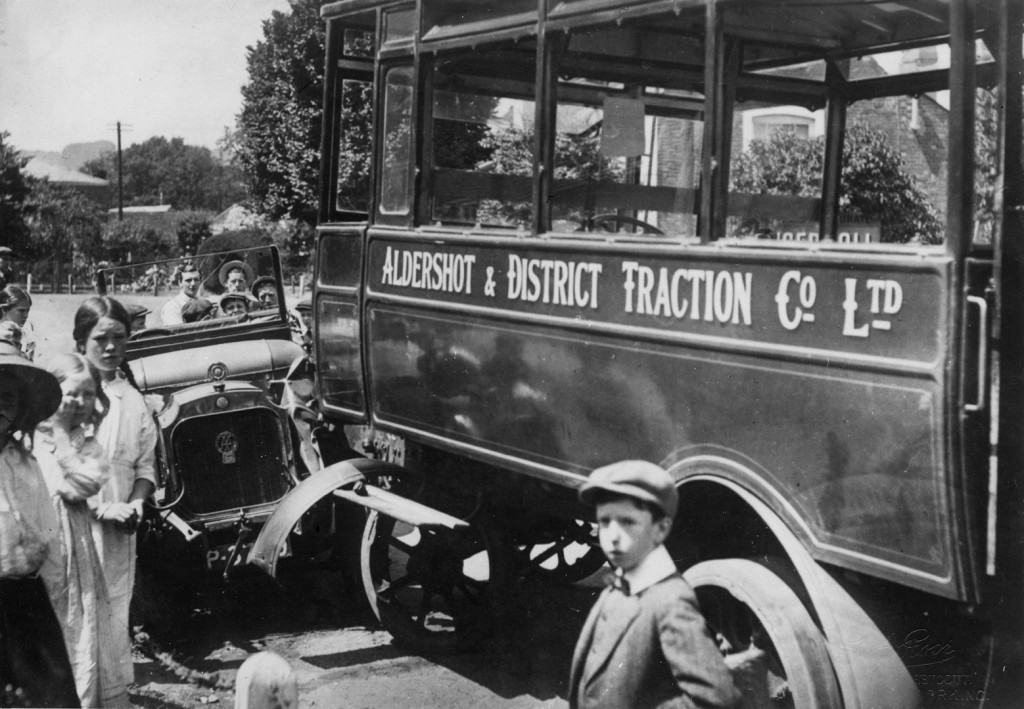
Image : Dorking Museum
On 27th November 1896 a car drove through Dorking for the first time. By 1904 200 cars were passing through on summer Sundays and the council was spraying water on the unpaved road surfaces to dampen the dust stirred up. By the 1920s traffic congestion through the town toward the open spaces of the Holmwood, the Sussex Downs and the coast was intolerable.

Image : Dorking Museum
The 1934 Dorking bypass (now the A24) was one of the earliest in the country. Despite much opposition the county council chose the cheapest route south, cutting through the grounds of the Deepdene close to its grand frontage. This made it far less attractive as a grand home. Its land attracted speculative builders and it began to be broken up for housing.
As demand for housing grew the beauty spots that surrounded the town were vulnerable to development. A large part of Box Hill was purchased by the financier Sir Leopold Salomons of Norbury Park and given to the National Trust in 1914 to protect it from development. Parts of Leith Hill were bought and donated to the National Trust by Cuthbert Heath of Anstie Grange. Holmwood Common was sold by the Duke of Norfolk to the county and local councils who gave it to the National Trust in 1955.

Image : Dorking Museum

Image : Dorking Museum
Last : Town Life
Next : The Coming of the Railway

